Rebuilding Resilience on the Land Ecological Restoration & the Hydrological Cycle
Agently meandering creek brings cool water to a southeast Wisconsin landscape scorched by record-breaking temperatures combined with zero rainfall. The farmer, taking a break from heart-rending work tilling under a failed crop in the droughty backfield, is refreshing his spirit at what has become a favorite spot. A flickering movement in a riffle near a groundwater spring catches his eye. His corn crop may have withered in the field, and his wife’s tomatoes may be dying in the garden. But here in the stream he meandered from an old drainage ditch 10 years ago with the help of the Natural Resources Conservation Service, an exquisitely colored rainbow darter seems to be doing just fine.
Under the lush overhang of prairie cordgrass that his restoration ecologist neighbor persuaded him to plant along the bank, he tallied even more fish species clustered by a spring: least darter, brook stickleback and stoneroller. He worries about them a little. He did, after all, see raccoon tracks in the soft mud. Those fish are vulnerable to being eaten the way they are bunched up. Still, this isn’t the only spring on this stream. Some of them will make it.
A Department of Natural Resources biologist had let him know that the least darter was a species of special concern to them. It pleases him that his stream is providing habitat for a rare species. He wonders what else might find a home in this restored creek. He never knew this many species of fish even lived in the waters of his land. He suspects that their presence is due to more than just reconfiguring the stream. It was about five years after he restored prairie on those 20 upland acres under the Conservation Reserve Program that he noticed profound changes in his stream. It started flowing year-round, and the water stayed cool and deep.
The restored prairie is blooming even while his corn is dying. This makes him glad he put that marginal 20-acre field into prairie awhile back. Maybe he should think about restoring prairie to that droughty back field too, if the government program continues.
Even without a cloud in the sky, he is seeing a silver lining in this drought.
No Good News
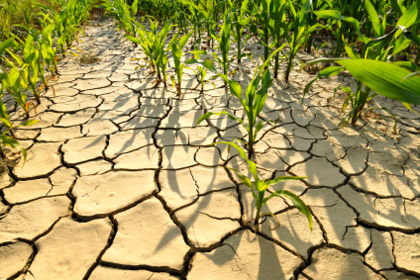
© iStockphoto.com/no_limit_pictures
This ecological vignette stands in sharp contrast to events that unfolded on many Midwestern streams and rivers during the drought-plagued summer of 2012. Perhaps most dramatic was a massive die-off of shovelnose sturgeon in the Des Moines River. With body counts of 40,000-60,000 individual fish, this calamity reached the level of national news. Photos of bloated fish bodies filled airwaves and internet. The immediate cause of such fish kills isn’t a mystery to scientists. The water simply becomes too hot. Some species die outright when temperatures rise. Others may die of heat-related diseases. Finally, and perhaps most importantly, warm water holds less oxygen than cool water. When oxygen runs out, fish die. It is that simple. Or is it?
The problem is not just one of warming rivers in a hot summer or even the frightening prognosis of changes due to a warming climate. Even if droughts are increasing in frequency and severity due to climate change, they still are not an entirely new phenomenon on the land. The land has a built-in resiliency and ability to maintain balance. Or, at least, it once did.
Seeking Solutions
What can a historical understanding of landscapes tell people about coping with drought? What can humans do to rebuild resilience on the land so ecosystems can cope with heat and aridity? A key solution lies in the restoration of the hydrological cycle using an ecological restoration paradigm. For longer than humanity can apprehend, water has been evaporating from oceans and lakes, and from vegetation on land, falling back to earth as rain and snow. It percolates through the ground recharging groundwater, cooling and filtering along its journey. This same water gradually re-emerges in seeps and springs, feeding rivers, streams and lakes. Even in times of drought, water keeps moving, thus replenishing streams and lakes. Balance is maintained on the landscape, and the ecosystems continue to function and to provide vital services.
A diversity of aquatic plants flourishes and provides complex habitats for a plethora of other aquatic organisms. Aquatic macroinvertebrates attach to varied substrates where they find ample oxygen and abundant microscopic life that serves as the food they graze, filter or capture. In such a vibrant aquatic ecosystem, a veritable smorgasbord of fish species finds oxygen, food and shelter needed to thrive. That is how it is supposed to work. Why, increasingly, isn’t it happening? Why are rivers and news clogged with dead fish?
Disrupted Pathways
Water still flows on the landscape, although often not in its same ancient paths. In county after county, town after town, watershed after watershed, hydrological connections have been massively and persistently disrupted. They are broken, blocked and re-routed by roads, dams, parking lots, buildings, agricultural drainage systems and other human landscape modifications. The amount of hard, impervious surface (pavement and concrete) multiplies hand-in-hand with development. Rain is warmed instantly when it hits such surfaces, thus speeding away with few opportunities to slowly sink into the earth.
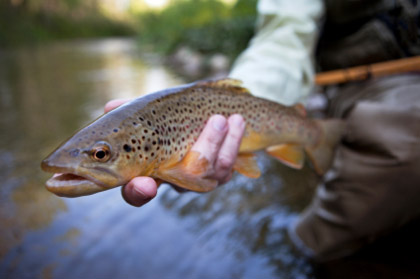
© iStockphoto.com/JMichl
Tiled agricultural fields rush nutrient-laden water directly to adjacent drainage ditches bypassing the filtering effects of remnant wetlands and riparian areas that would have otherwise provided some cleansing. Drainage ditches, in turn, speed eutrophic, warm and sediment-laden water to larger receiving waters. Decomposition of the resulting over-abundant growth of plants further depletes the oxygen of an already warmed water body. Fish die, again, in large numbers.
Rapid run-off erodes hills and banks, and loads receiving surface waters with contaminants, excess nutrients and sediment. Pure, cold, oxygen-rich streams trade brook trout for highly tolerant species, such as non-native carp. Under conditions of extreme heat and drought, even highly resilient species like carp can, and do, die in large numbers.
On an intact landscape, wetlands act as sponges holding water and letting it slowly sink into the earth. Many tens of millions of acres of wetlands in the nation, however, have been lost since the time of European settlement through dredging, draining and filling. Along with loss of wetlands, landscapes have lost much of their hydrological recharge capacity. Although the outright filling of wetlands has been greatly reduced due primarily to the Clean Water Act of 1972, degradation of wetlands continues. Without adequate buffers, the wetlands suffer from incompatible activities on adjacent land and allowable activities within. Such activities impinge on and degrade wetlands while staying within the letter of the law.
Wooded wetlands can legally be logged. However, in the process, use of heavy equipment results in soil compaction, severe rutting and introduction of alien weedy plant species. Stormwater that discharges directly into wetlands from developed areas can clog porous soils with fine sediments and load soils with contaminants. Degraded wetlands typically lose plant and animal species diversity, suffer impaired integrity and functions of the soil community, and lack a normal hydrological cycle. A reduction or even elimination of vital ecological services follows in turn.
Redrawing the Circle
The scientific discipline of restoration ecology originated to assist in recovery of damaged or degraded ecosystems. To accomplish the goal of ecological recovery, the restoration ecologist needs to include all interrelated components. The hydrological cycle is one of the key components that must be considered if a restored ecosystem is to function sustainably in the long term.
Watershed restoration planning and rehabilitation activities traditionally address hydrological restoration directly via actions on rivers and streams, often with dramatic results. For example, obsolete dams are removed, thus restoring natural flow and allowing free fish migration. Critical erosion is addressed with vegetative solutions or armoring, which radically decreases the sediment load and restores fish habitat.
In coastal areas, the National Oceanic and Atmospheric Administration (NOAA) is focused on restoring the hydrology of wetland ecosystems by removing blockages caused by roads, dikes and causeways. Wetlands associated with estuaries are renowned for their crucial roles in providing feeding, rearing and refuge habitat for a diversity of commercially and recreationally important fish species. After the high profile Hurricane Katrina, even the general public has a greater appreciation of the role wetlands play in shore land protection during storms.
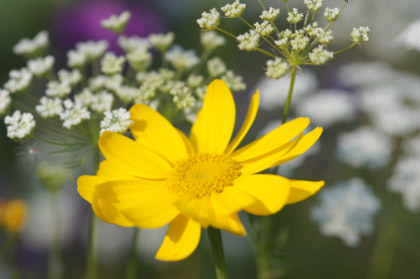
© iStockphoto.com/schnuddel
Increasingly, faced with such varied issues and challenges, watershed planning considers the landscape as a whole. To be successful, such holistic planning must also include the people who live on the land and engage them as allies to identify problems and to formulate solutions. Therefore, a hefty dose of citizen education is in order. Most people grow up and live far removed from their ancestors’ historic agrarian roots. They cannot rely on experiential understanding of the hydrological cycle to carry them through. Instead, successful hydrological restoration projects need to deliberately incorporate stakeholder education in matters of ecology, hydrology, water quality, community planning and more.
These sorts of grassroots restoration solutions differ radically from one-dimensional governmental fiats. They are dynamic integrations of ecological, financial, legal and social approaches. In a very real way, watershed planning, and actions that restore watersheds, never end. Within this expanded vision, ecological restoration serves as more than just a guiding framework; it foments critical action.
Patches of restored prairie, strategically placed within the larger landscape, make significant contributions to hydrological restoration. Spreading root masses of prairie plant species rebuild soil organic matter and support a vibrant soil community of microorganisms. This enhanced soil community, in turn, holds water like a sponge. Deep roots of other species facilitate the downward percolation of water. Precipitation sinks deeply into the earth – precipitation that would otherwise strike impervious or compacted surfaces and flow rapidly off the land – carrying sediments and pollutants.
With such pervasive water sources vegetation can flourish even in times of drought. Volume and velocity of stormwater runoff are reduced. This translates to less erosion on the land. It reduces strains on aging, built infrastructure. Receiving waters are no longer continually impaired by increasing pollutant loads. This sounds good in theory, but does it really work? An on-the-ground project that has demonstrated success for more than 20 years suggests that it does indeed.
A Real-Life Example
Applied Ecological Services of Brodhead, Wis., has long been a leader in the science and art of applying principles of ecological restoration to the overarching challenge of hydrological restoration. A nationally acclaimed conservation development, Prairie Crossing in Grayslake, Ill., stands as testimony to the efficacy of this approach.
Within a 677-acre landscape, Prairie Crossing residential housing is clustered, which minimizes the amount of impervious surface and maximizes the extent of natural landscapes. This optimizes natural hydrological functions within the development and contributes to the hydrological restoration of the site as well as the larger watershed. Extensive native restoration plantings of prairie vegetation reduce the need for artificial irrigation. Most native prairie species have evolved with drought resistance, so they continue to bloom and set seed even in dry years. They retain moisture in their collective root mass.
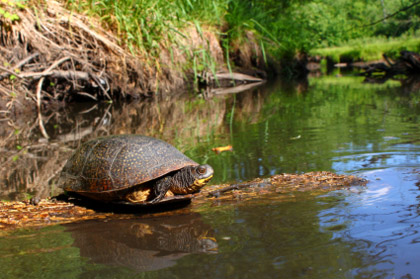
© iStockphoto.com/Wirepec
The centerpiece of this conservation development, Lake Aldo Leopold, is the beneficiary of a carefully designed water cleansing system of sequentially linked bioswales, upland prairies and wetlands that re-create the historic hydrology of a natural prairie ecosystem. This system, dubbed the “Stormwater Treatment Train™,” was designed and installed by Applied Ecological Services. It increases lag time of water movement, multiplies opportunities for pollutant removal through settling and biofiltration (removing excess nitrogen, phosphorus, heavy metals and sediment) and reduces rate and volume of runoff through enhanced infiltration.
With such a system, stormwater is viewed and managed as an asset instead of being perceived as a nuisance that must be quickly conveyed away from houses and streets. As a result, attractive natural areas, with viewable wildlife, are nurtured; vital groundwater sources are recharged; and the quality of surface and ground water is preserved and maintained.
Conventional engineered stormwater management systems are designed to remove pollutants through a settling process in a detention basin. By contrast, Stormwater Treatment Train™ relies on restored prairies to remove the majority of pollutants before the water reaches downstream receiving waters of a high quality lake. There is no need for a traditional detention basin. The resulting Lake Aldo Leopold is fishable and swimmable, and it is an aesthetic delight. To an ecologist, an even more profound outcome is the way the 20+ year-old lake continues to support breeding populations of fish species listed as threatened and endangered in the State of Illinois.
Another tangible benefit is the way extensive areas of native vegetation provide green space in the residential development. This not only enhances the quality of life of its residents, it also provides habitat for a variety of wildlife, including the almost universally appreciated songbirds. Grassland-dwelling bird species, with their populations declining in much of the United States, find breeding habitat in the restored prairies. Natural thickets, swales and wetlands provide vital migratory stopover habitat for bird species as they make their long journeys south in the fall and north again in the spring.
On a smaller scale, residential yards minimize use of high maintenance turf lawn through integrating native wildflower plantings in their landscaping. This seemingly simple approach, magnified house by house, protects water quality at the source of runoff. The use of native vegetation limits use of fertilizers and greatly reduces wasteful sprinkling. Neighborhood by neighborhood, street by street, yard by yard, Prairie Crossing continues to demonstrate how restoration of the land can result in restoration of a landscape’s hydrology.
In these times of changing climate and frequent and severe droughts, this is indeed a piece of good news. It is a lesson worth repeating on as many scales as possible

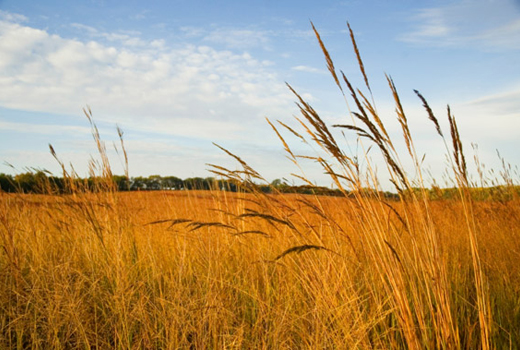









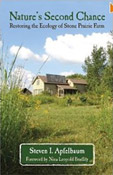
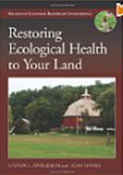 Nature’s Second Chance –
Nature’s Second Chance –

















